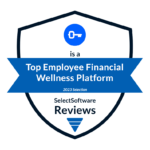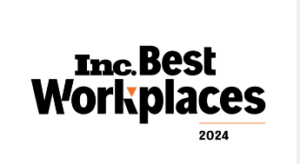Brightside provides personalized financial support and solutions for all employees. Yet, because frontline workers comprise 70% of America’s workforce – and just 13% are financially healthy – our unique Financial Care model is particularly critical for frontline employees’ complex and nuanced needs, which other employee financial benefits aren’t built to serve.
Keep reading to learn how Brightside intertwines real solutions with an innovative approach that builds hope, improves financial lives, and drives results such as lower healthcare costs and reduced turnover for employers who offer it as an employee benefit.
Support for emergencies and beyond
Financial Care uses proven behavioral science techniques that make it easy for employees to take action and form good financial habits. Our Financial Assistants meet every Brightside user where they are with compassion and without judgment, so they feel comfortable sharing their financial challenges, barriers to success, priorities, and goals.
When employees first connect with Brightside (by phone, online, or through the Brightside app), they answer basic questions about the needs that motivated them to get in touch. If an employee states a specific perceived need, such as a loan, Brightside Financial Assistants dig deeper into the “why” to ensure they understand the employee’s priorities, what matters to them, and other aspects of the employee’s financial reality.
In emergency situations, such as an employee who is homeless or doesn’t have food, Financial Assistants aim to quickly triage the situation by connecting with free local resources and other options that can provide immediate relief, such as access to safe shelter and a food pantry. If an employee shares that they’re dealing with domestic violence, medical needs, addiction, or legal woes, their Financial Assistant also helps them navigate to their other relevant employee benefits, such as an EAP or legal aid.
Empowering employees to make choices
Financial Assistants help Brightside users understand all their options based on the situation, which may include:
- Access to affordable paycheck-linked Brightside partner loans
- Connecting with free resources to offset the costs of essentials
- Opportunities to reduce bills, student loan payments, or the cost of other types of debt
- Leveraging features in their free Brightside Spending Account or Brightside Savings Account that support their goals
Financial Assistants explain the potential risks or implications of any option they may present to a Brightside user, but do not pressure them to make certain choices. As importantly, Financial Assistants never tell a Brightside user that they “should” do something, or otherwise make them feel ashamed about their financial choices or situation.
Empowering employees to make decisions that support their needs helps to build hope and financial confidence, and plants the seeds for improved financial health.
Building hope through strategic support
Financial Assistants use the foundations of hope science to help Brightside users identify attainable goals, figure out realistic ways to reach them, and believe in their ability to attain them.
Many financially vulnerable employees are so used to struggling with day-to-day financial challenges that they’ve never thought about financial goals, or believed that they can move their financial life forward. Often, Brightside users initially state avoidance goals, such as not getting evicted, or not wanting to miss work because they lack reliable transportation. Financial Assistants encourage them to work toward whatever goal they’ve identified as important, and help them find pathways and steps that will help them achieve it. Because many financially vulnerable people can feel hopeless and overwhelmed, this approach is critical to helping them build hope that things will be okay and establishes belief in their ability to set and achieve goals that will improve their financial situation.
Our Financial Assistants focus on making it easy for employees to take small steps that improve their financial health, consistently praise and celebrate their hard work, and encourage them to continue that forward momentum in every interaction.





